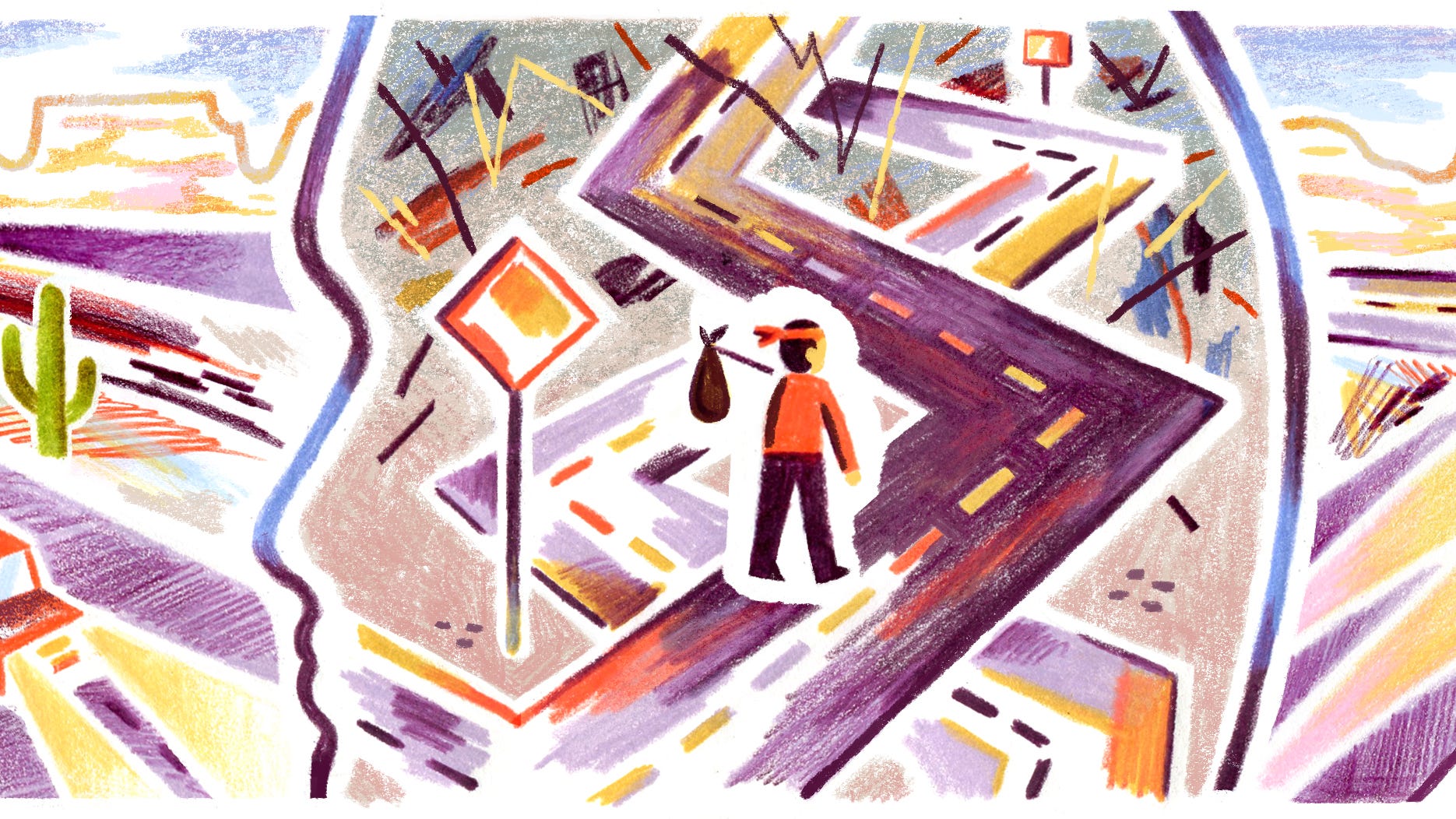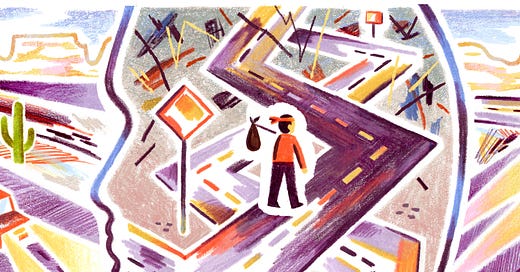The True Story of the Hitchhiker Who Was Shot in Pursuit of Kindness
Ray Dolin was hiking across the U.S. when he was attacked and nearly died. Or that's what he said. His story quickly unraveled, but his real truth has never been told until now.

Illustration by Ariel Davis
This is a story about a lie.
In June of 2012, Ray Dolin set off hitchhiking across the country with his camera in hopes of capturing any evidence he could find of “human kindness in America.”
Dolin — a stout man of 45, with an easygoing personality and candid way of telling you he hasn’t always lived life like an angel — says the idea to undertake the journey came to him when he encountered a homeless veteran in front of a Walmart in his hometown of Julian, West Virginia.
The veteran was in his early twenties, and “troubled,” as Dolin puts it. Standing with his army duffel, he endured verbal abuse from patrons coming in and out of the store’s parking lot. Dolin says one driver slowed down just to yell “get a job.” A veteran himself of both the British and American armed forces, Dolin established an easy rapport with the young soldier, and insisted they get something to eat.
He learned the man had been hitchhiking from Fort Bragg, North Carolina, to his home in L…
Keep reading with a 7-day free trial
Subscribe to Narratively to keep reading this post and get 7 days of free access to the full post archives.



